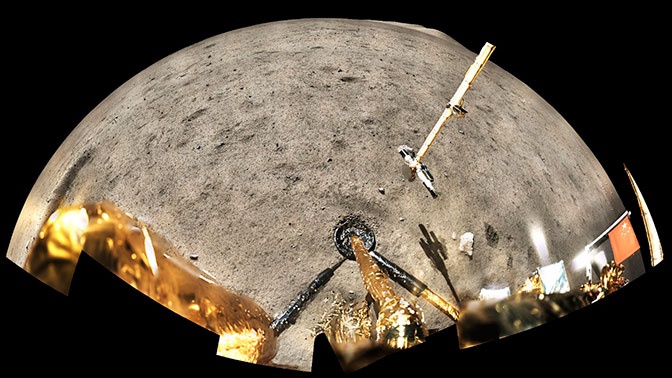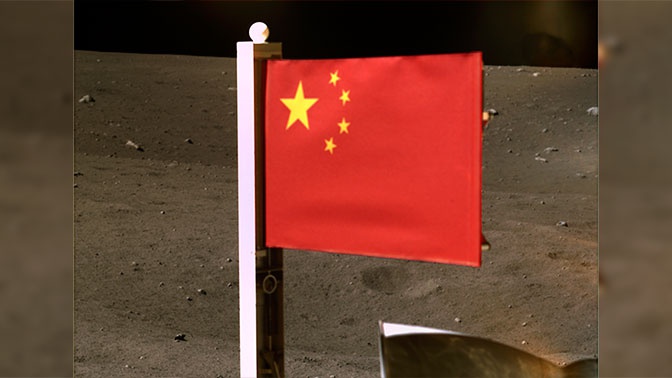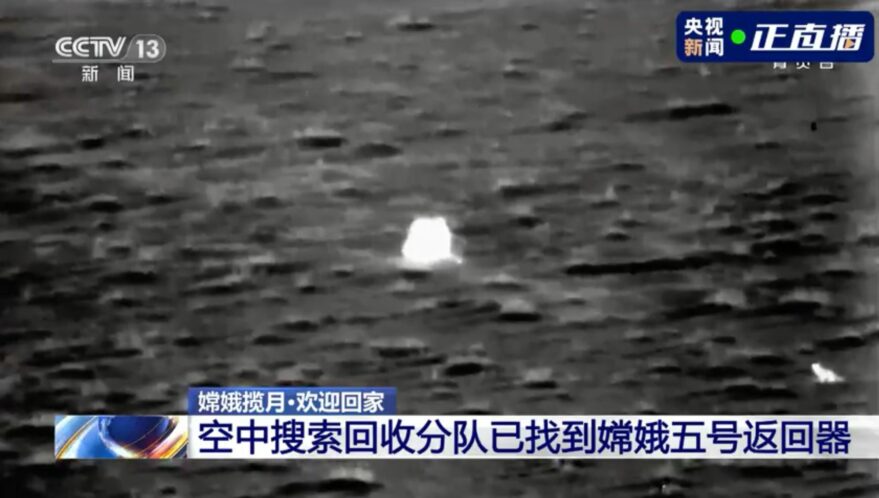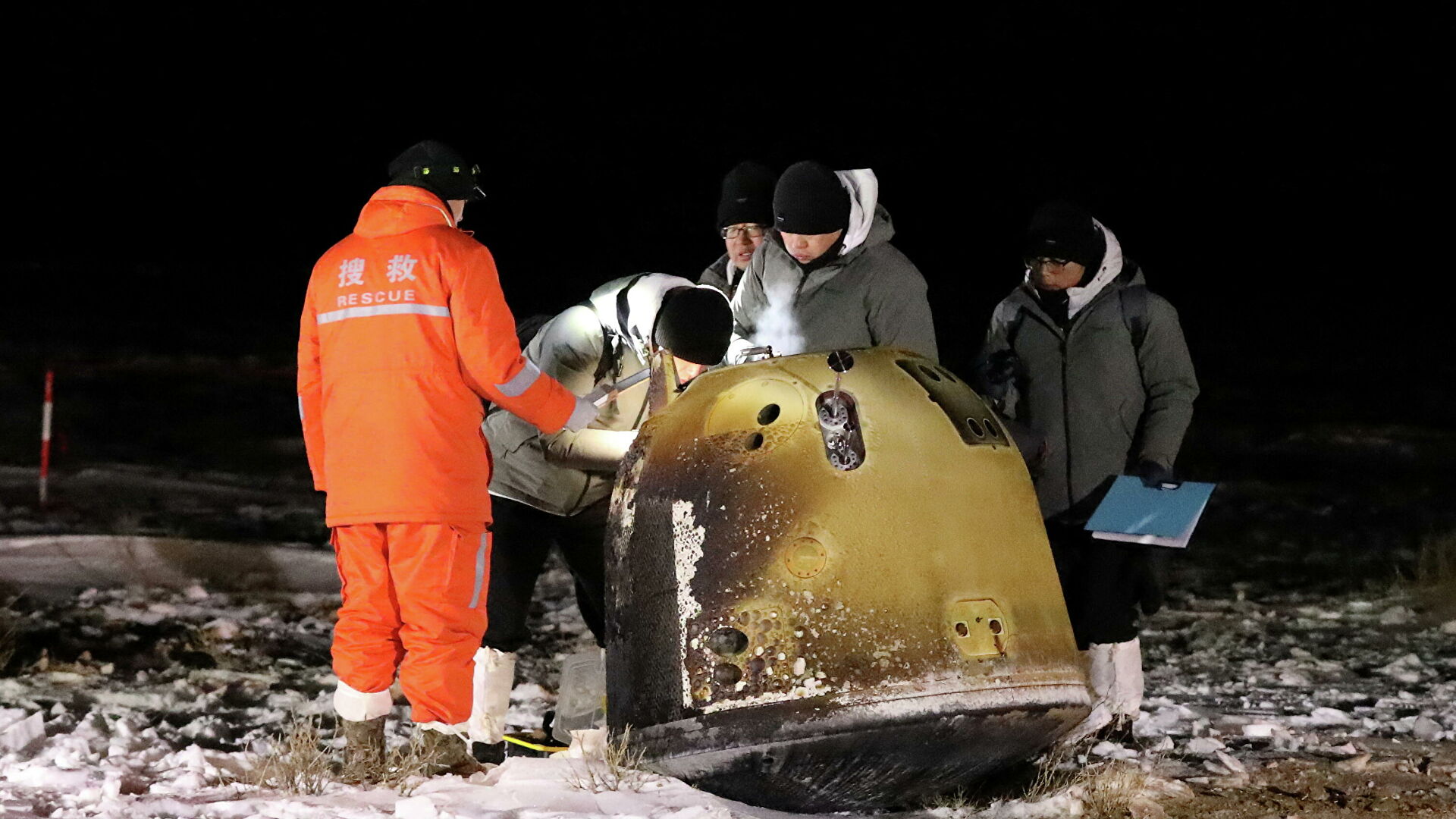Приложение
How to install the app on iOS
Follow along with the video below to see how to install our site as a web app on your home screen.
Примечание: This feature may not be available in some browsers.
Вы используете устаревший браузер. Этот и другие сайты могут отображаться в нём некорректно.
Вам необходимо обновить браузер или попробовать использовать другой.
Вам необходимо обновить браузер или попробовать использовать другой.
Космонавтика КНР
- Автор темы Бен-Ицхак
- Дата начала
Китайский Заяц и японский Фалкон
Сначала про зайца - - Заяц добрался до Луны, совершил мягкую посадку - и теперь взялся за лопату . В следующем клипе - схема (мультик) перехода на низкую лунную орбиту. А с 39 секунды - реальные кадры (НЕ мультик) отделения лэндера от орбитера: сегодня он будет копать (не покладая лап), а…
 smoliarm.livejournal.com
smoliarm.livejournal.com
Китайцы тоже мультики умеют
Аппарат «Чанъэ-5» прислал первый в истории динамический снимок с поверхности Луны


 tvzvezda.ru
tvzvezda.ru


Аппарат «Чанъэ-5» прислал первый в истории динамический снимок с поверхности Луны
На панорамное фото попал флаг КНР.
Команда LROC опубликовала фотографии с лунной орбиты китайского посадочного аппарата «Чанъэ-5» / Chang’e-5 и вычислила координаты 43,0576 ° N, 308,0839 ° E , –2570 м над уровнем моря, с расчетной точностью плюс-минус 20 метров.


 aboutspacejornal.net
aboutspacejornal.net


Китайский посадочный аппарат миссии «Чанъэ-5» сфотографирован американским аппаратом с лунной орбиты
Команда LROC опубликовала фотографии с лунной орбиты китайского посадочного аппарата «Чанъэ-5» / Chang’e-5 и вычислила координаты 43,0576 ° N, 308,0839 ° E , –2570 м над уровнем моря, с расче…
 aboutspacejornal.net
aboutspacejornal.net
Китайцы продолжают показать мастер класс!Взлетная ступень Лунного зонда Чанъэ 5 успешно состыковался с транспортным модулем и прегрузила капсулу с обрзцами Лунного грунта для возвращения на Землю.
China completes first spacecraft rendezvous, docking in lunar orbit
China completes first spacecraft rendezvous, docking in lunar orbit
Последнее редактирование:
«Чанъэ-5»: есть взлет, есть стыковка!
6 декабря 2020 г. в 05:42 пекинского времени (5 декабря в 21:42 UTC) взлетный аппарат китайского комплекса «Чанъэ-5» с образцами лунного грунта в контейнере произвел стыковку с орбитальным комплексом на окололунной орбите. Выполнены все ключевые, не проверенные ранее операции в экспедиции за лунным грунтом, за исключением последней – старта к Земле.
6 декабря 2020 г. в 05:42 пекинского времени (5 декабря в 21:42 UTC) взлетный аппарат китайского комплекса «Чанъэ-5» с образцами лунного грунта в контейнере произвел стыковку с орбитальным комплексом на окололунной орбите. Выполнены все ключевые, не проверенные ранее операции в экспедиции за лунным грунтом, за исключением последней – старта к Земле.
Прилунение «Чанъэ-5» — Новости Космонавтики
novosti-kosmonavtiki.ru

В КНР готовятся к запуску Chang Zheng-3B со спутником Gaofen 14
В Китайской Народной Республике, 6 декабря 2020 года, объявлена временная запретная зона для движения воздушного транспорта в районе космодрома Сичан (Юго-Западный Китай) и других районах Китая, об…
 aboutspacejornal.net
aboutspacejornal.net

В Китайской Народной Республике, 6 декабря 2020 года, объявлена временная запретная зона для движения воздушного транспорта в районе космодрома Сичан (Юго-Западный Китай) и других районах Китая, обозначенных уведомлением НОТАМ (NOtice To AirMen, NOTAM).
Стартовое окно, запланированного пуска новой модификации ракеты-носителя CZ-3B/G5– Chang Zheng-3B/G5 (长征三号乙改五型) из космодрома Сичан в провинции Сычуань: с 03:49 до 04:17 UTC ( с 11:49 до 12:17 BJT). По московскому времени пуск РН CZ-3B/G5 планируется 6 декабря 2020 года с 06:49 до 07:17 МСК.
Полезная нагрузка пуска РН CZ-3B/G5: тяжёлый спутник дистанционного зондирования (ДЗЗ), способный проводить высокоточную спутниковую съемку и картографирование “Гаофэнь-14” / Gaofen 14 / GF14/ (高分十四号卫星).
Обтекатель РН CZ-3B/G5 удлинен на 900 мм. Это позволит использовать более крупные спутники, улучшится адаптивность к задачам предстоящих миссий. Ракета сможет выводить полезные нагрузки не только на геостационарную орбиту, но и осуществлять миссии на солнечно-синхронную орбиту.
Это будет первый полет новой модификации РН и 36-й космический запуск в 2020 году, который планирует осуществить Китайская Народная Республика из заявленных 40+ пусков ракет-носителей в текущем году и общий 354-й орбитальный пуск ракеты семейства Chang Zheng (“Великий поход”).
NOTAM (англ. NOtice To AirMen – извещение лётному составу) — оперативно распространяемая информация (извещения) об изменениях в правилах проведения и обеспечения полётов и аэронавигационной информации.
Видео стыковки и передачи контейнера с грузом в возвращаемый модуль:
Пекин, 12 декабря /Синьхуа/ -- Комплекс, состоящий из орбитального и возвращаемого модулей китайского лунного зонда "Чанъэ-5", в субботу выполнил орбитальный маневр, готовясь покинуть лунную орбиту по траектории, которая вернет аппарат на Землю, сообщили в Китайском национальном космическом управлении /CNSA/.
http://russian.news.cn/2020-12/12/c_139584143.htm
http://russian.news.cn/2020-12/12/c_139584143.htm
"Чанъэ-5" перешел на траекторию возвращения на Землю.
Токмо исторической справедливости ради - этих "динамических снимков" было привезено экспедициями Аполло целые километры киноплёнок.Аппарат «Чанъэ-5» прислал первый в истории динамический снимок с поверхности Луны
"Чанъэ-5" вернулся на Землю

 aboutspacejornal.net
aboutspacejornal.net

Капсула миссии «Чанъэ-5» с образцами лунного грунта вернулась на Землю
Капсула миссии «Чанъэ-5» с образцами лунного грунта приземлилась на территории хошуна Сыцзыван в автономном районе Внутренняя Монголия в 17: 59 UTC. Ранее в нашем журнале “Всё о Космосе”…
 aboutspacejornal.net
aboutspacejornal.net
Что то мне этот спускаемый аппарат зело напоминает спускаемый аппарат корабля "Союз".
China recovers Chang’e-5 moon samples after complex 23-day mission
by Andrew Jones — December 16, 2020
The Chang'e-5 reentry capsule in Siziwang Banner, Inner Mongolia, Dec. 16, 2020. Credit: CNSA/CLEP
 Helicopter footage of recovery of the Chang’e-5 reentry capsule. Credit: CCTV/framegrab
Helicopter footage of recovery of the Chang’e-5 reentry capsule. Credit: CCTV/framegrab
by Andrew Jones — December 16, 2020
The Chang'e-5 reentry capsule in Siziwang Banner, Inner Mongolia, Dec. 16, 2020. Credit: CNSA/CLEP
Chang’e-5 promises new lunar science as well as more ambitious future missions
HELSINKI — China has recovered precious lunar samples after a successful reentry and landing of the Chang’e-5 return capsule.
The roughly 300-kilogram Chang’e-5 return capsule performed a ballistic skip reentry at 12:33 p.m. Eastern Dec. 16, effectively bouncing off the atmosphere over the Arabian Sea before reentry.
The capsule containing around 2 kilograms of drilled and scooped lunar material landed in the grasslands of Siziwang Banner at 12:59 p.m. Recovery vehicles located the capsule shortly after.
The recovery ends the space segment of the 23-day Chang’e-5 mission which aimed to collect rock samples thought to be billions of years younger than so far delivered by the U.S. Apollo and Soviet Luna missions.
While the samples will be delivered to a specially constructed laboratory in Beijing for preparation, analysis and storage, Chang’e-5 opens doors for further exploration.
The verification of technologies for liftoff from the lunar surface and automated rendezvous and docking in lunar orbit open the way for planned sample-return missions to near Earth asteroids and Mars in the coming decade, as well as crewed lunar landings in the 2030s.
Chang’e-6, a backup mission, will now be repurposed for a landing at the lunar South Pole or South Pole-Aitken Basin. The mission will involve contributions from CNES of France.
The Chang’e-5 orbiter performed a burn following separation of the return capsule to avoid reentering the atmosphere. The orbiter could now be used for an extended mission, utilizing imagers on the spacecraft.
Lunar science pay dirt
Chang’e-5 landed near Mons Rümker in Oceanus Procellarum Dec.1 and collected 0.5 kilograms of samples by drilling up to two meters into the lunar regolith as well as scooping material from the surface. Crater counting from orbital observations indicates the area sampled could be young in geological terms.
Verification of the age of the samples would confirm ideas that some areas of the moon experienced late-stage volcanism, and compositional analysis could provide insights into the reasons behind it.
Katherine Joy, a Reader in Earth Sciences at the University of Manchester says the samples might represent some of the last lunar lava flows to have erupted. “If so, they not only tell us about how the Moon’s thermal history but these are also vital samples to help us calibrate the Moon’s impact history.”
Joy states that calibrating this young part of the Moon’s impact record would have “important implications for understanding the surface ages of all other bodies in the Solar System.”
Jessica Flahaut, a planetary geologist at the University of Lorraine, France, says the mission is”so great for the science community, who has been waiting to get more samples from decades—the last sample return being Luna 24 in 1976—that the Moon is getting more attention again.”
Flahaut notes that the the drilled samples, consisting of 0.5 kilograms of the material will provide further windows on en we will have a record of paleo-regolith layers in the drill core samples, and we could use those to survey the record of the solar winds and galactic events over millions of years.”
“Remote sensing data from the last decades have also shown a number of curiosities, including felsic domes, irregular mare patches, and rock types at the lunar surface, which we don’t have in the sample collection yet. It is therefore key to insist that lunar exploration is still only at its beginning, and that there is much more to do.”
New phase of lunar and planetary exploration
Chang’e-5 launched Nov. 23, entering lunar orbit 112 hours later. Sampling followed in the hours after a Dec. 1 landing, with an ascent vehicle delivering the collected material into lunar orbit.
An unprecedented automated lunar orbit rendezvous and docking with the mission service module two days later allowed the transfer of the 2 kilograms of material into the return capsule.
The mission was China’s most complex so far in terms of robotic space exploration. Initially envisioned as the third of three steps to orbit, land on and sample the moon, Chang’e-5 and the previous successful Chang’e missions give way to an expanded lunar exploration program.
The extended phase of lunar exploration involves the Chang’e-7 and 8 lunar landing missions in the coming years. The aim will be to establish an ‘international lunar research station’ in the mid-to-late 2020s as a precursor to crewed landings.
Sample return technology and experience developed through Chang’e-5 is also to be utilized for planned near Earth asteroid and Mars sample return missions later in the decade. The complexity of the Chang’e-5 mission profile is considered by observers to be related to future crewed lunar landing ambitions.

Китай начал исследовать образцы лунного грунта, доставленные «Чанъэ-5»
Китайские ученые извлекли из возвращаемой капсулы космического аппарата «Чанъэ-5» один килограмм и 731 грамм лунного грунта, приступив к изучению доставленных образцов. «19 декабря образцы лунного грунта, полученные в ходе миссии “Чанъэ-5”, были официально переданы. Китай приступил к своей первой научной работе по хранению, анализу и исследованию образцов внеземных тел», — передает РИА Новости заявление китайской стороны.

 naked-science.ru
naked-science.ru
Китайские ученые извлекли из возвращаемой капсулы космического аппарата «Чанъэ-5» один килограмм и 731 грамм лунного грунта, приступив к изучению доставленных образцов. «19 декабря образцы лунного грунта, полученные в ходе миссии “Чанъэ-5”, были официально переданы. Китай приступил к своей первой научной работе по хранению, анализу и исследованию образцов внеземных тел», — передает РИА Новости заявление китайской стороны.

Китай начал исследовать образцы лунного грунта, доставленные «Чанъэ-5»
Китайские ученые приступили к изучению образцов лунного грунта, которые доставил на Землю автоматический космический аппарат «Чанъэ-5». Исследователи надеются лучше понять структуру спутника нашей планеты.
Chang’e-5. Недостача ~270 граммов лунного грунта
Chang’e-5 ставил своей целью собрать ~2 кг лунного грунта: 0,5 кг при бурении, 1,5 кг при черпании. Hu Hao говорит, что бурение планировалось на 2 м вглубь, но бур натолкнулся на более твердые породы, продолжать бурить решили рискованным делом, поэтому глубина скважины составила меньше 1 м. Вероятно, это объясняет недостачу ~270 граммов.
https://aboutspacejornal.net/2020/12/21/change-5-недостача-270-граммов-лунного-грунта/
Chang’e-5 ставил своей целью собрать ~2 кг лунного грунта: 0,5 кг при бурении, 1,5 кг при черпании. Hu Hao говорит, что бурение планировалось на 2 м вглубь, но бур натолкнулся на более твердые породы, продолжать бурить решили рискованным делом, поэтому глубина скважины составила меньше 1 м. Вероятно, это объясняет недостачу ~270 граммов.
https://aboutspacejornal.net/2020/12/21/change-5-недостача-270-граммов-лунного-грунта/
Вот они, хваленые автоматы. А был бы там экипаж с Alex_ii в качестве буровика - фиг бы его это остановило, нашел бы хорошее местечко и пробурил сколько надо! Попутно, глядишь, и нефть бы нашелбурение планировалось на 2 м вглубь, но бур натолкнулся на более твердые породы, продолжать бурить решили рискованным делом, поэтому глубина скважины составила меньше 1 м.

Если правильно искать - мы и пиво на Луне найдем... Самородное...Попутно, глядишь, и нефть бы нашел

